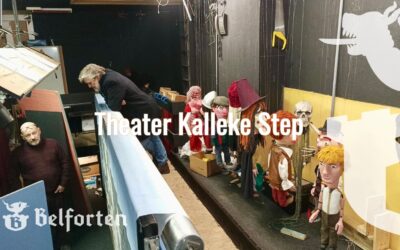Frequently Asked Questions
Frequently Asked Questions
What is the function of a belfry?
A belfry is the pre-eminent symbol of a city’s independence. A belfry performed multiple functions. The most common was as a lookout post for the city, complete with a tower in which the city bells hung. At the same time, it was an archive where municipalities kept their most important documents. The bells at the top of the tower announced public announcements, warned of danger, storms, fires and were rung at celebrations.
What is a cloth hall?
Source: Wikipedia
Why a dragon on the belfry?
Is the Belfry of Sluis the only Dutch Belfry?
What is the tallest Belfry?
What is the oldest Belfry?
The oldest Belfry in the world is that of Poitier (1099). The oldest Belfry on the UNESCO World Heritage List is that of Tournai (1192).
What does one understand by Flemish renaissance?
The Flemish Renaissance is an art and architectural movement that developed in the Low Countries during the 16th and 17th centuries and was influenced by the Italian Renaissance. However, the Flemish variant adds its own local interpretation, characterized by a combination of traditional Gothic elements and new classical forms. This makes it a unique style rich in decoration and detail, but also clearly rooted in local building traditions and culture.
Characteristics of the Flemish Renaissance
- Mix of Gothic and Renaissance:
Traditional Gothic elements, such as vertical lines and pointed arch forms, are combined with classical elements such as round arches, pilasters, pediments and columns. - Decorative wealth:
The Flemish Renaissance is known for its refined decorations, such as sculptures, cartouches, mascarons (mask heads), medallions and lavish facade decoration. - Brick and natural stone:
Buildings are often constructed of brick with natural stone elements, such as frames around doors and windows. This is reflected in the typical speklagen (alternation of brick and natural stone). - Stair gables:
Stair gables remain popular in the Flemish Renaissance, but they are enriched with Renaissance details such as sculpture or ornamentation. - Italian influences:
The influence of Italian architects and art movements is visible, for example in the use of symmetry, proportion and geometric designs. - Civil and religious buildings:
This style is used in both public buildings (such as town halls and guild halls) and in churches and private residences of wealthy citizens.
Well-known examples
- City Hall of Antwerp (1565): An iconic building that is a superb example of the Flemish Renaissance, with symmetry, speccas and classical elements.
Town Hall of Oudenaarde: Although built in the late Gothic style, it also exhibits some early Renaissance traits.
Town Hall of Leuven: Especially the decorative details are strongly influenced by the Flemish Renaissance.
Cultural context
The Flemish Renaissance emerged during a time of economic boom in Flanders, when cities such as Antwerp, Bruges and Ghent were important for trade and art. Through contact with Italy, via trade routes and artists such as Pieter Paul Rubens, Renaissance styles seeped into Flemish art and architecture. The movement reflects a period when urban pride and civic wealth were expressed in architecture.
In short, the Flemish Renaissance is a unique rendition of the classical Renaissance style, highlighting Flanders’ rich cultural tradition while adding a local, decorative flair.
The three most recent posts
The judge, the witch and the devil
Three special stories from the history of Tielt are symbolized and immortalized by three statues of Jef Claerhout.
Up in the belfry of Tielt!
Extensive message about the tour of the belfry of Tielt accompanied by a city guide and the subsequent ‘climb’.
Theater Kalleke Step
Notice of an unexpected visit to theater Kalleke Step in Grembergen during a planned visit to Dendermonde.


